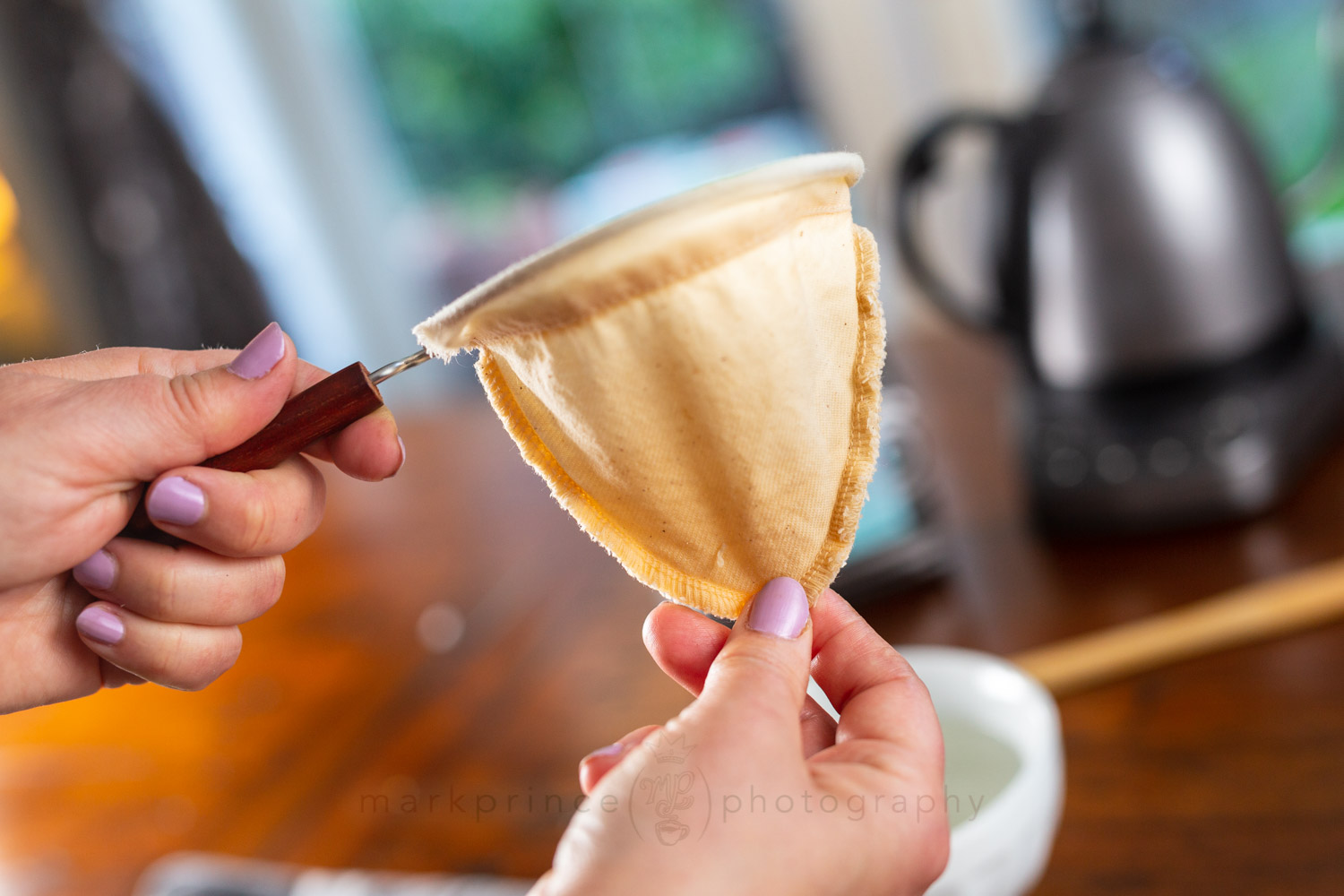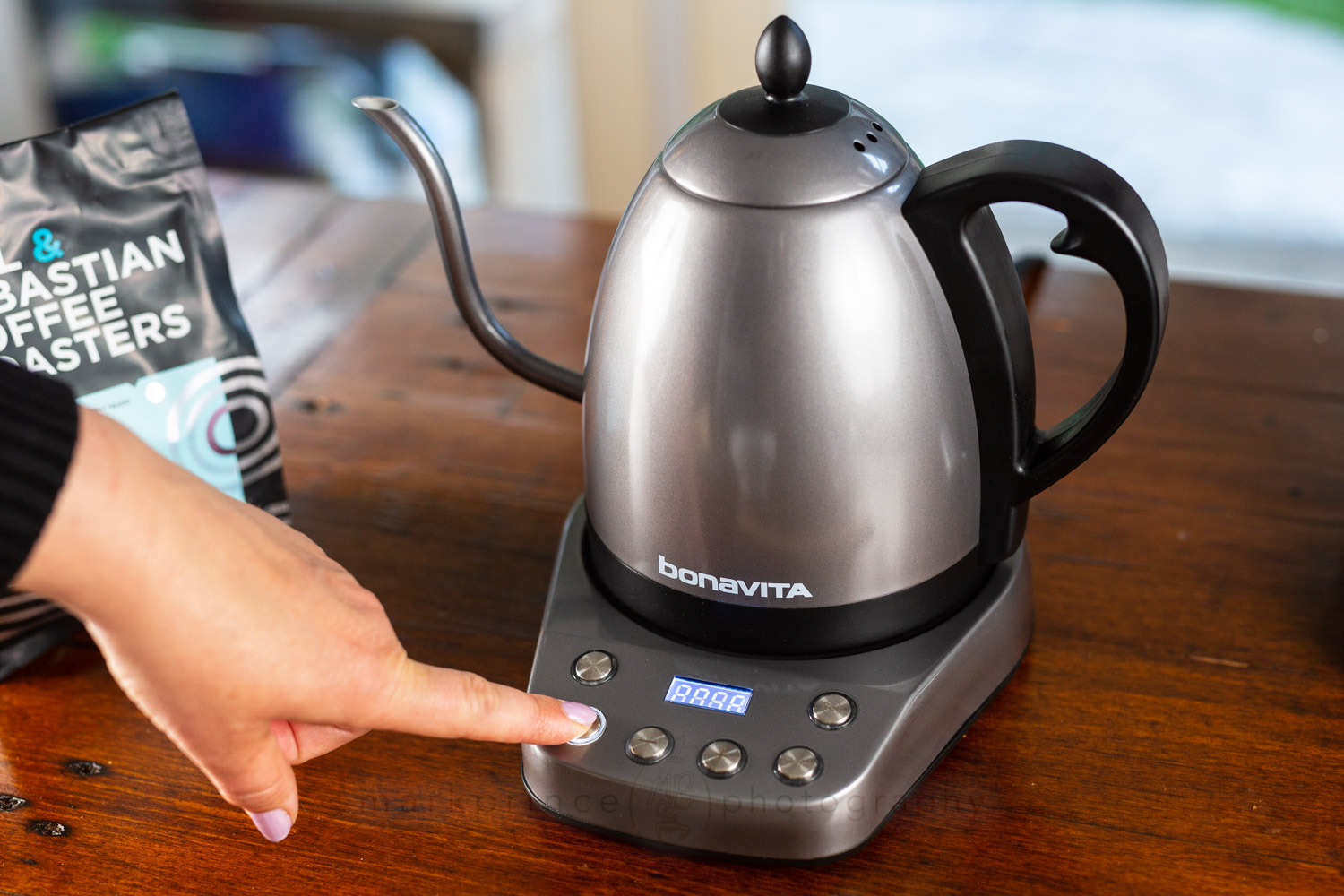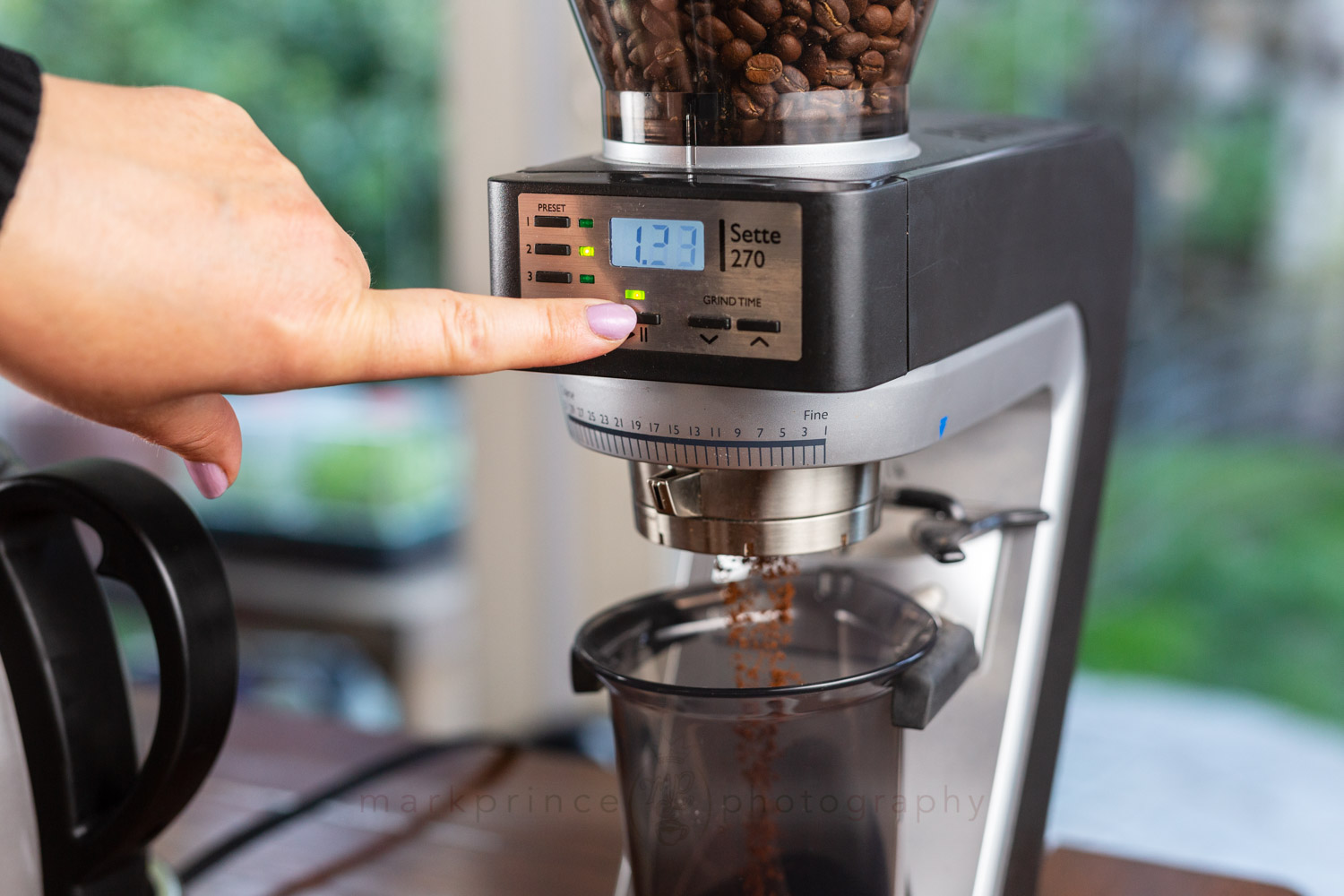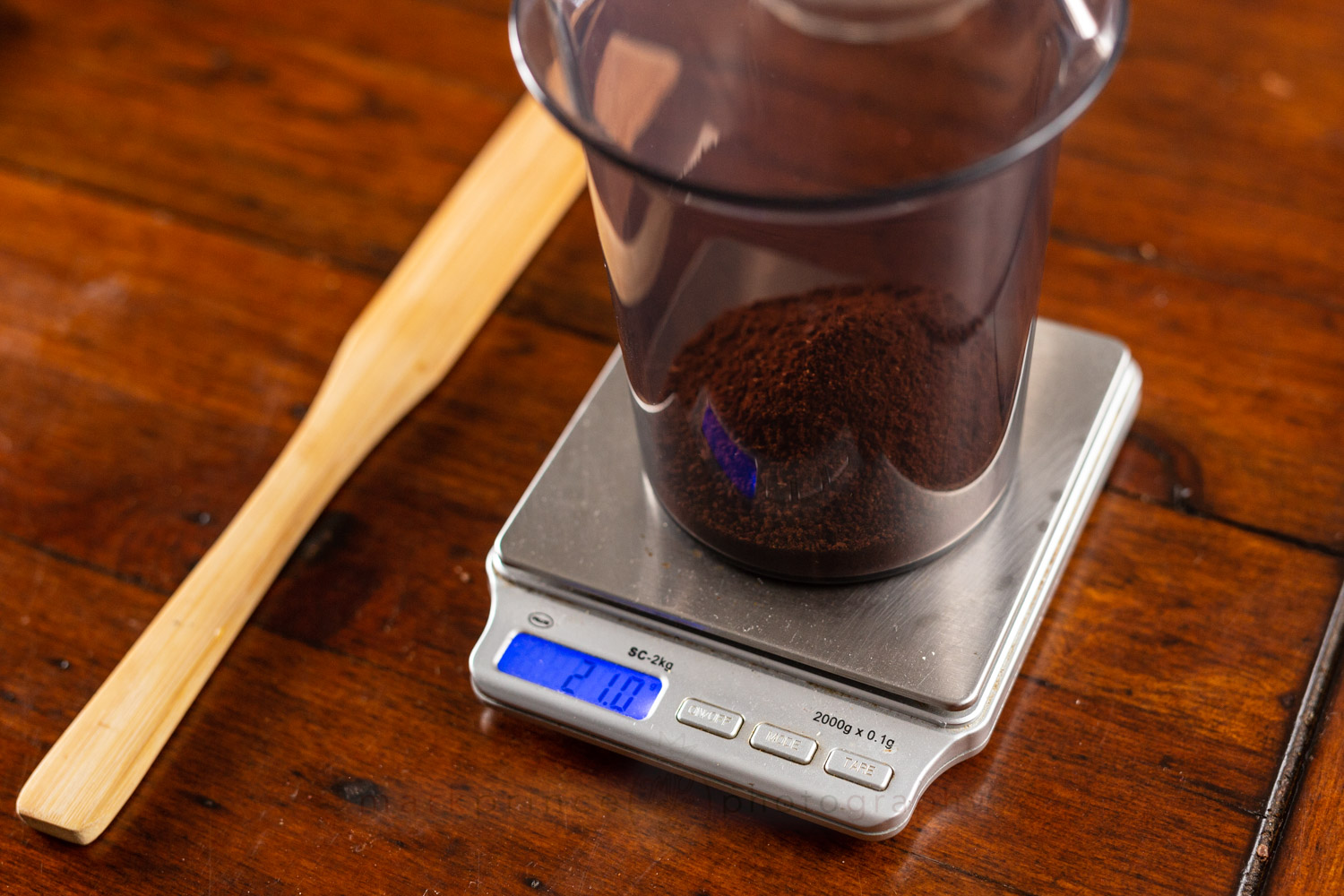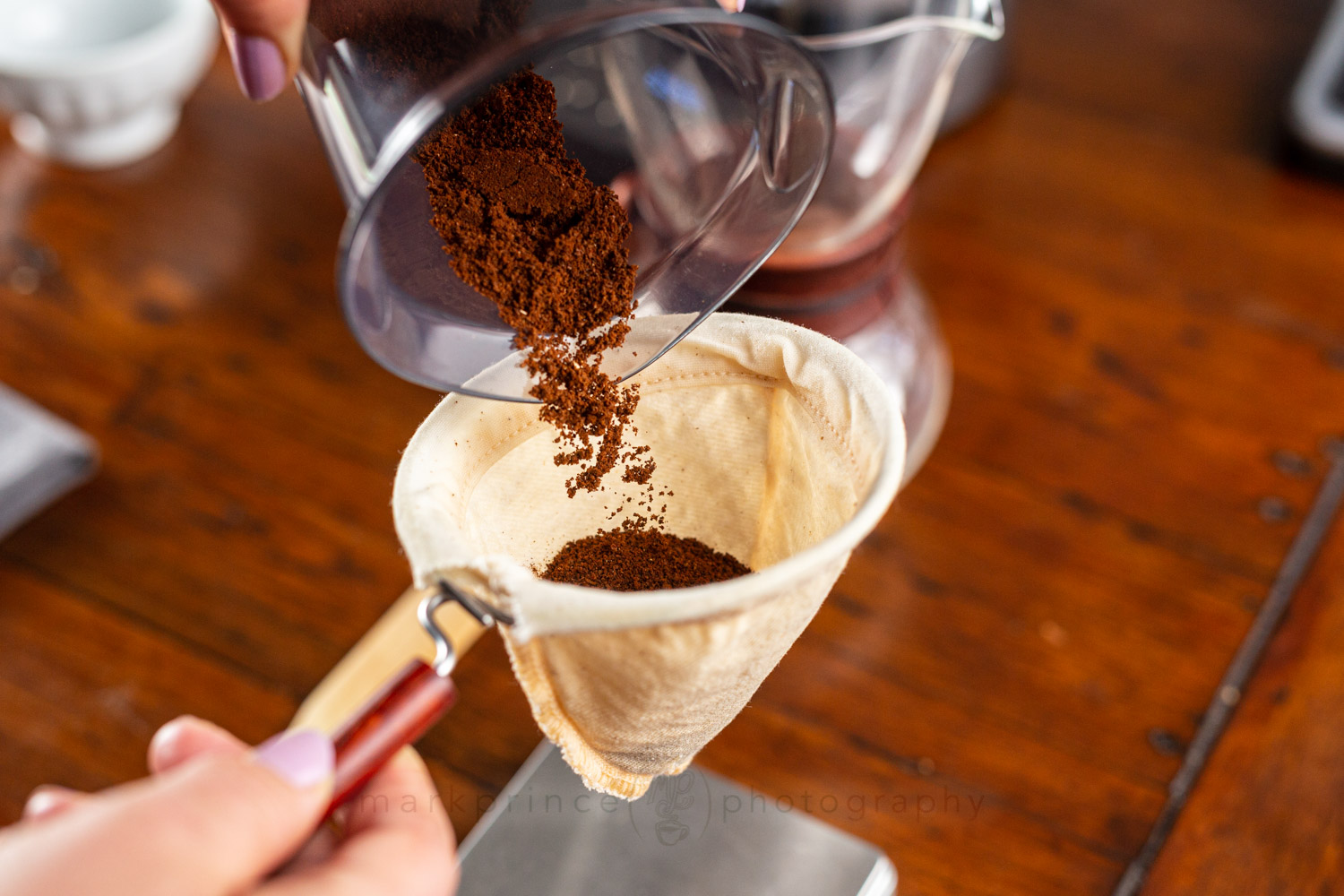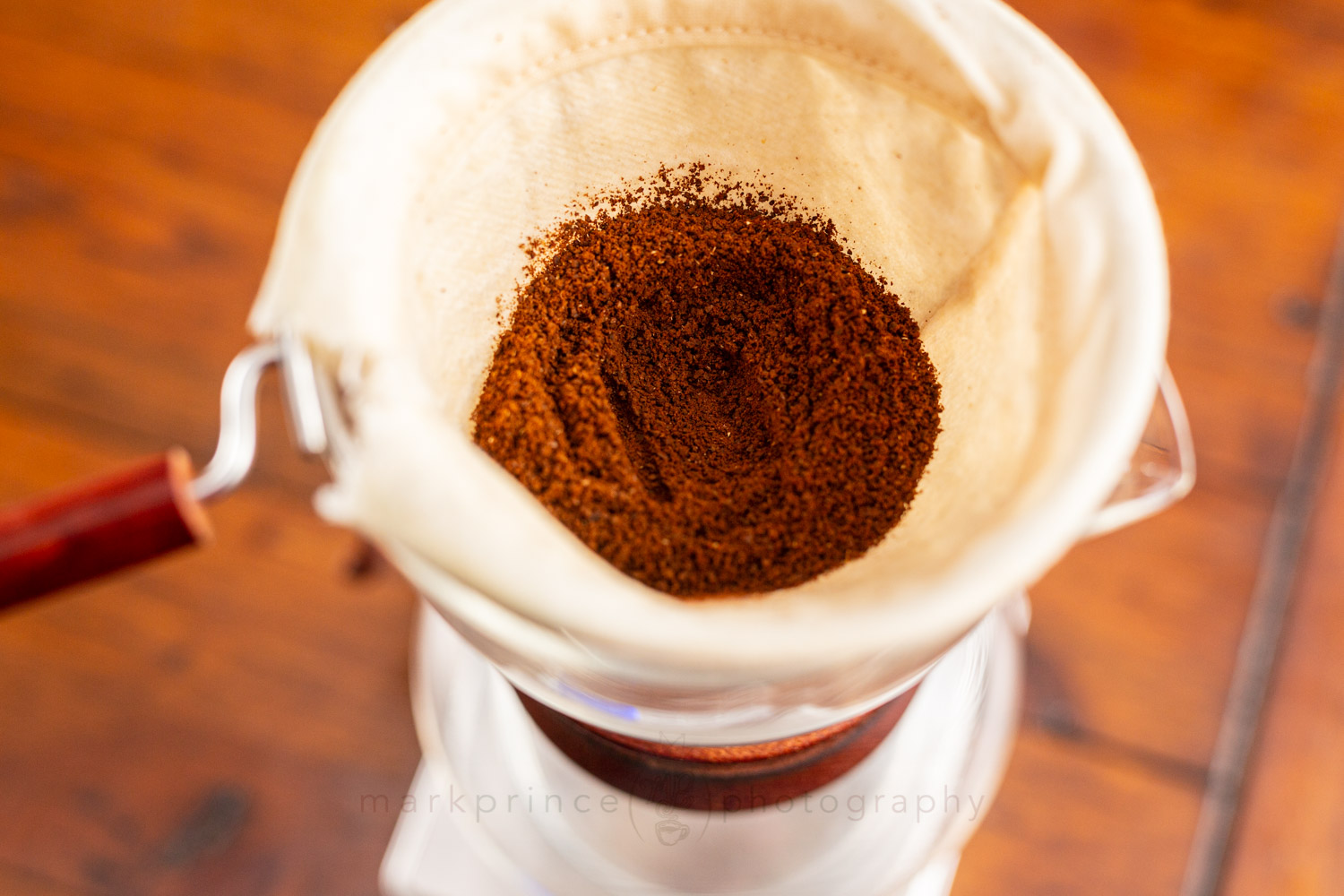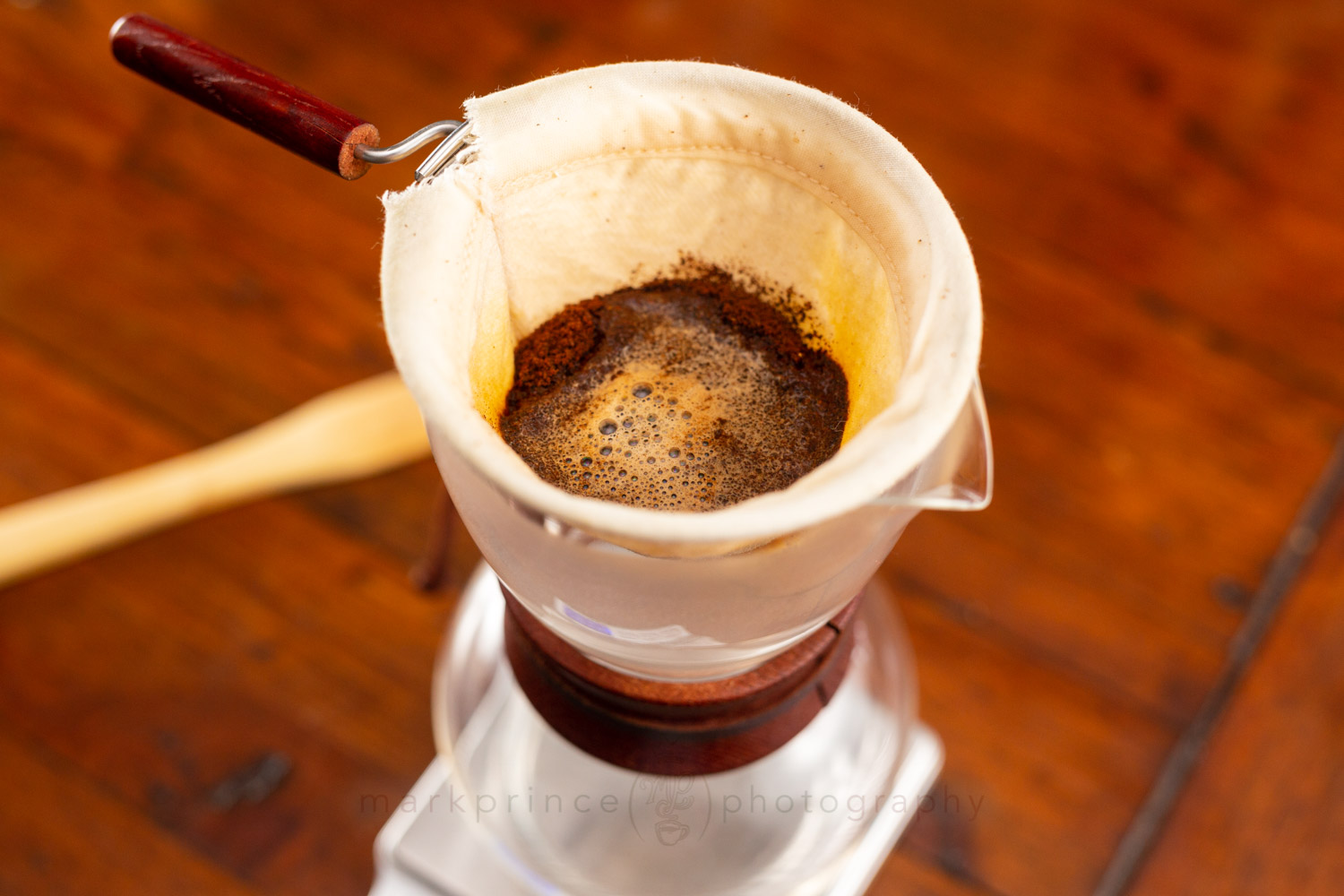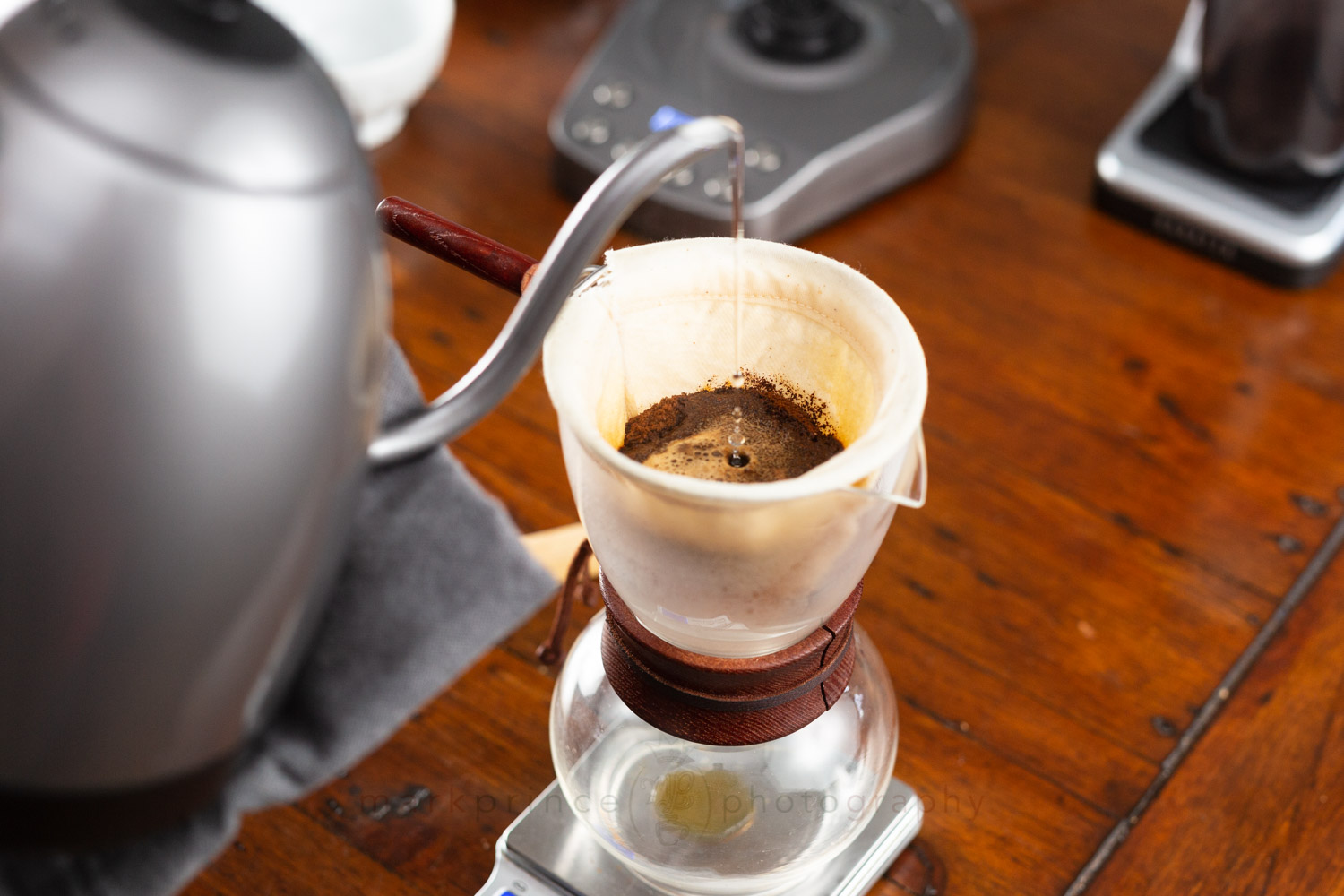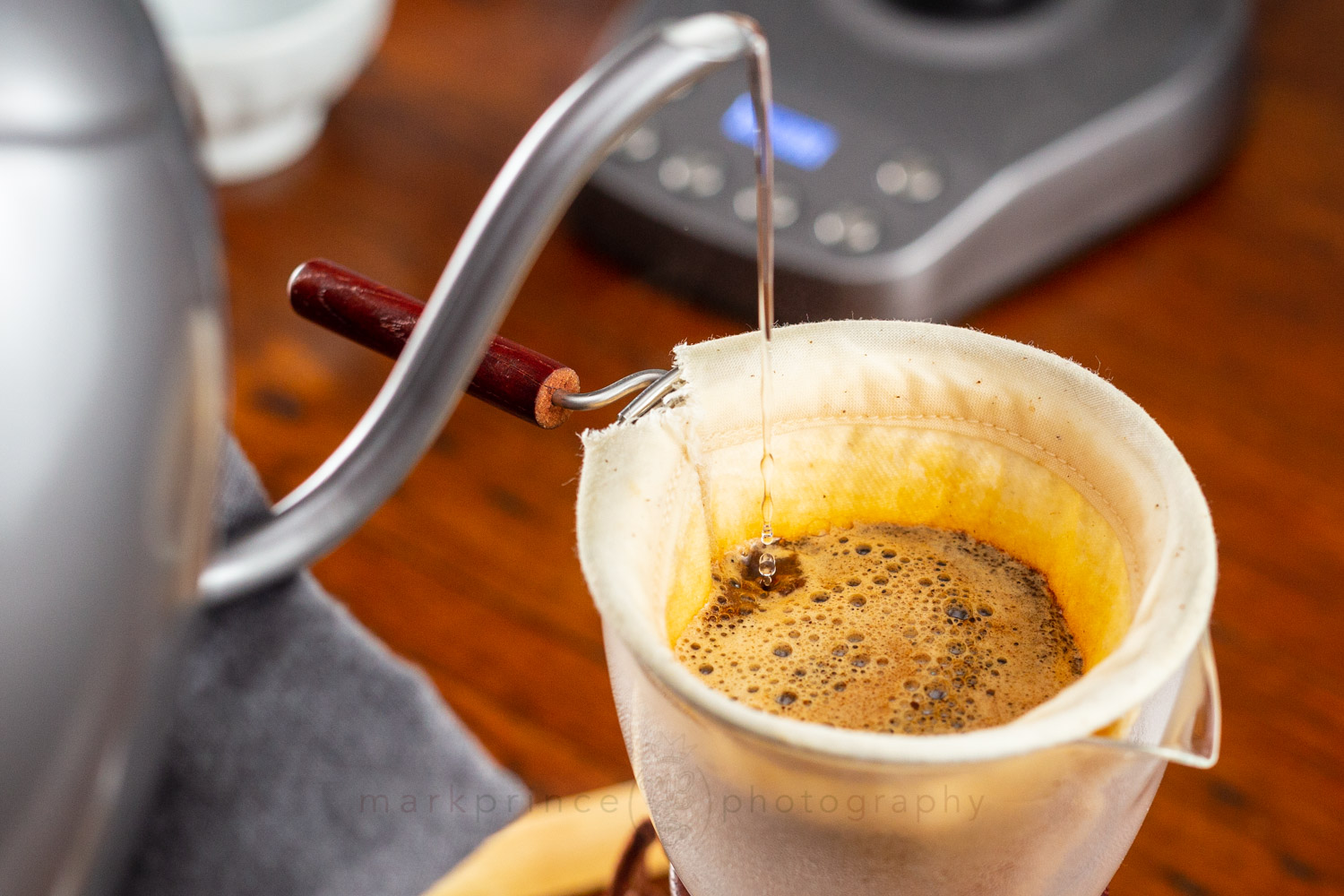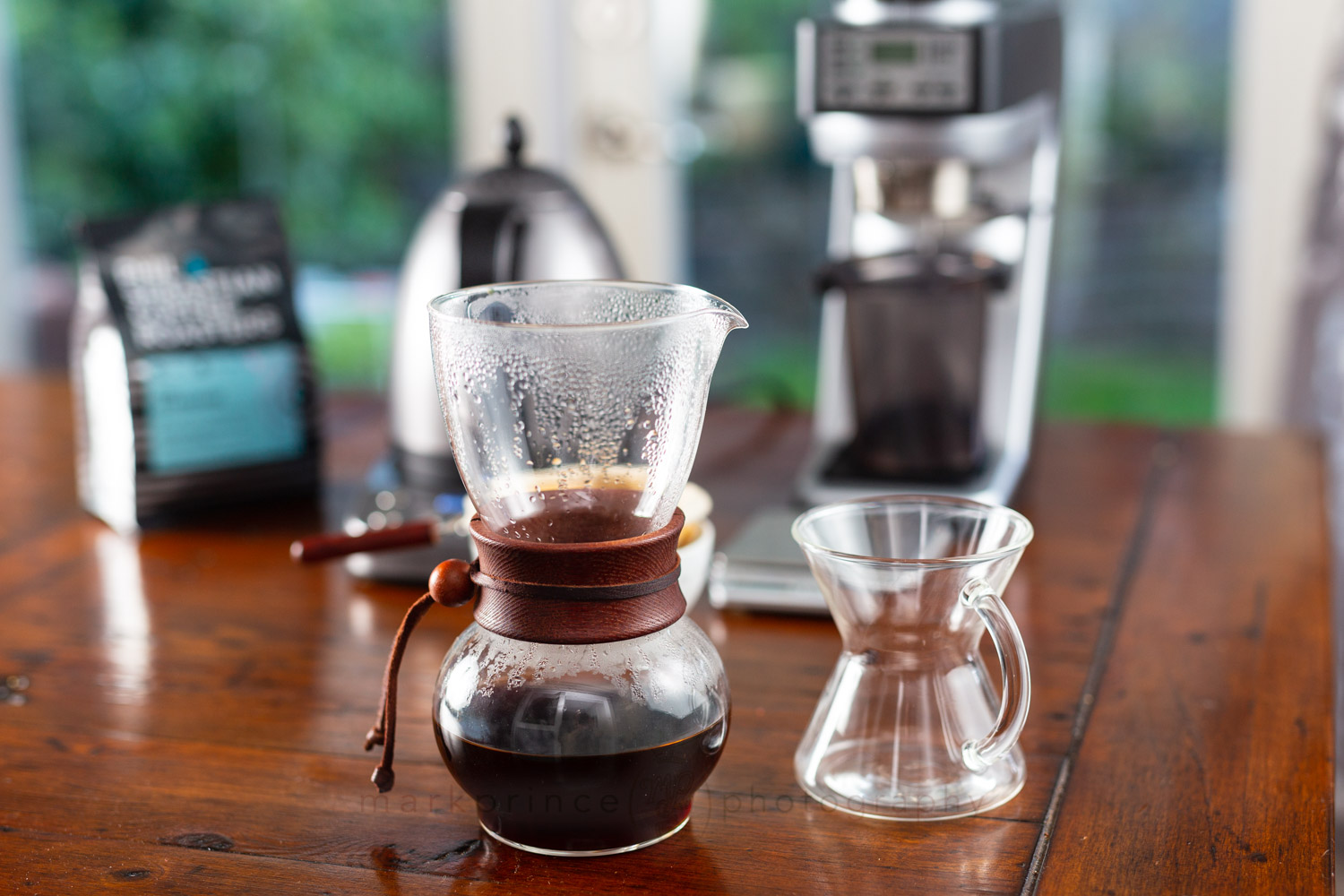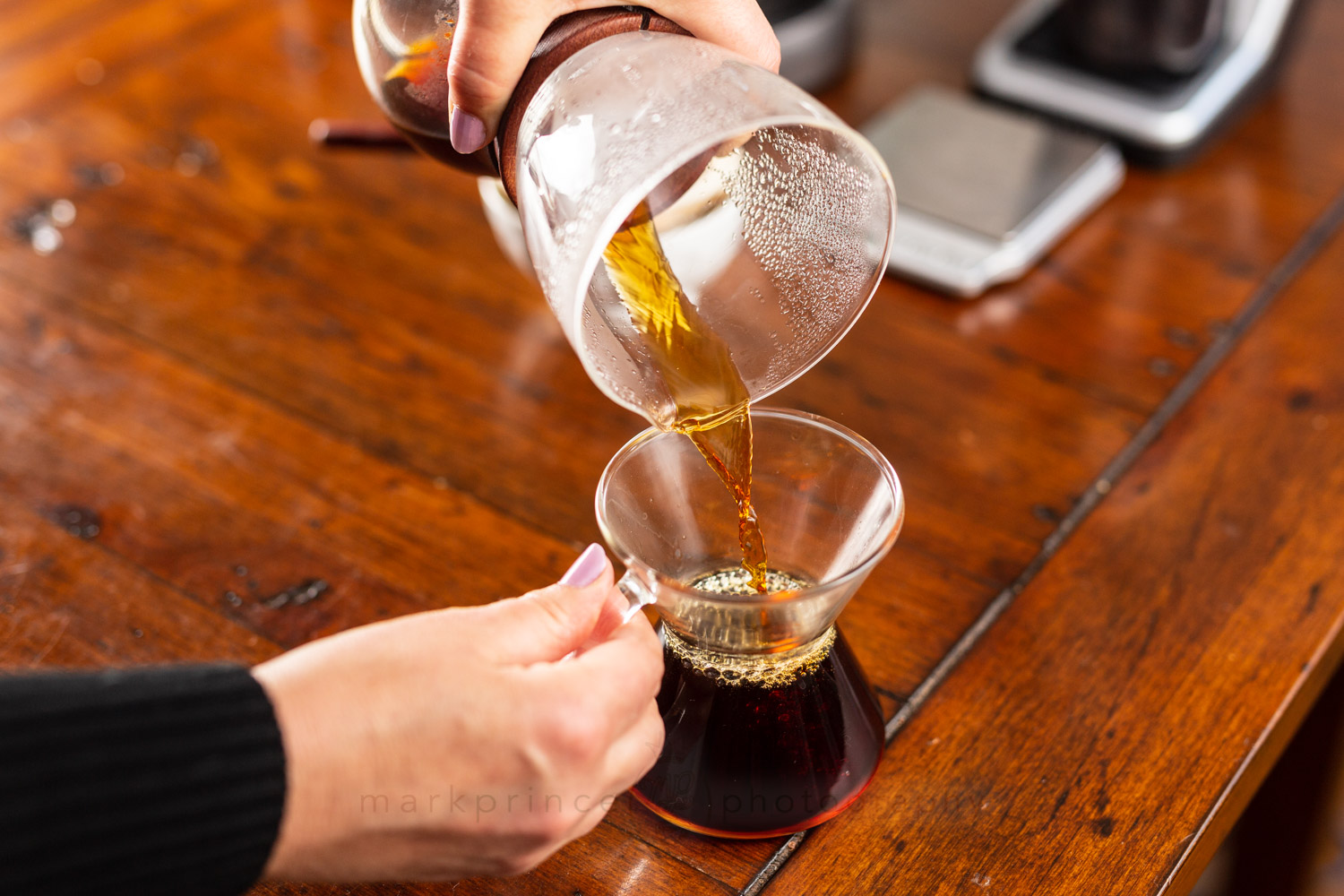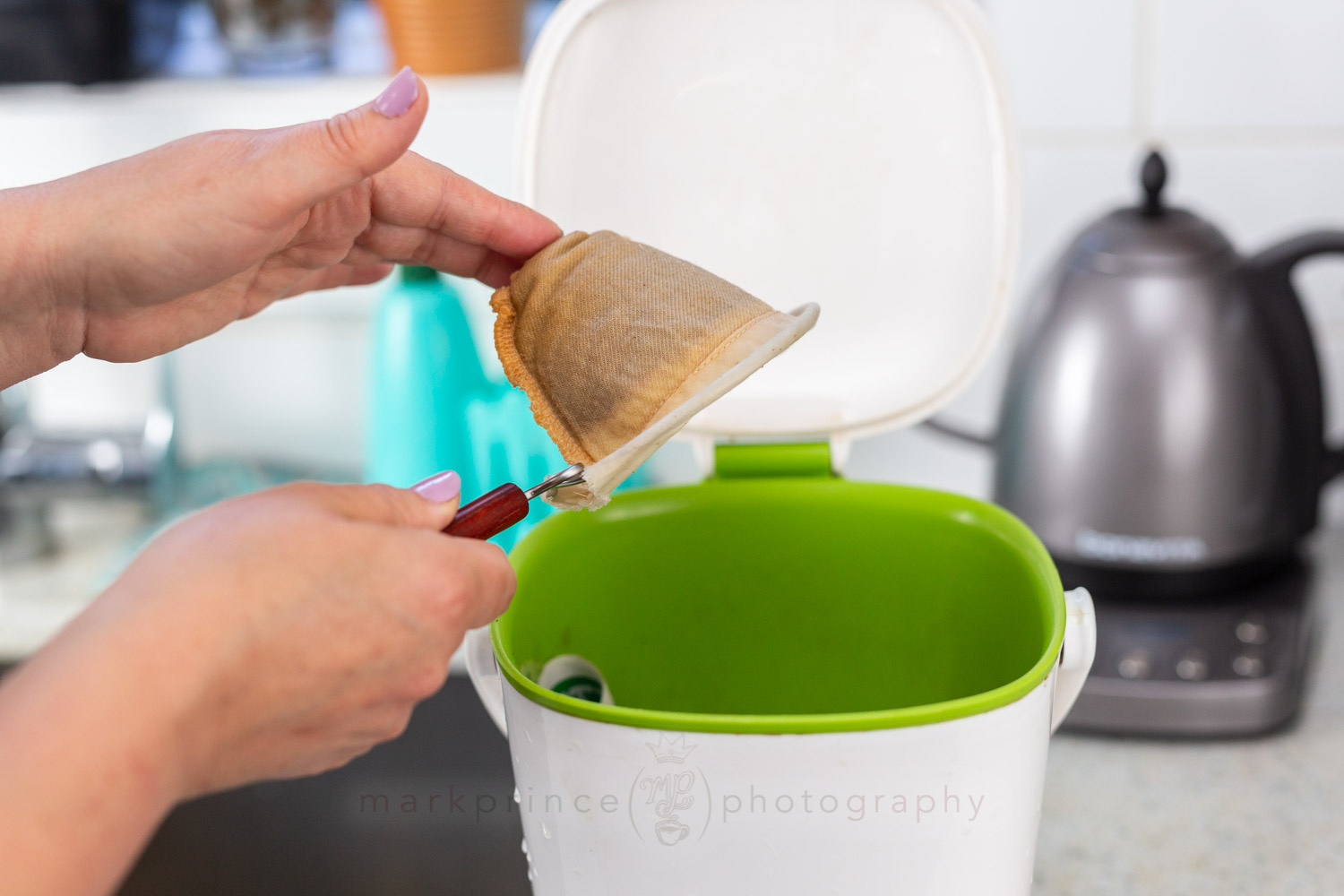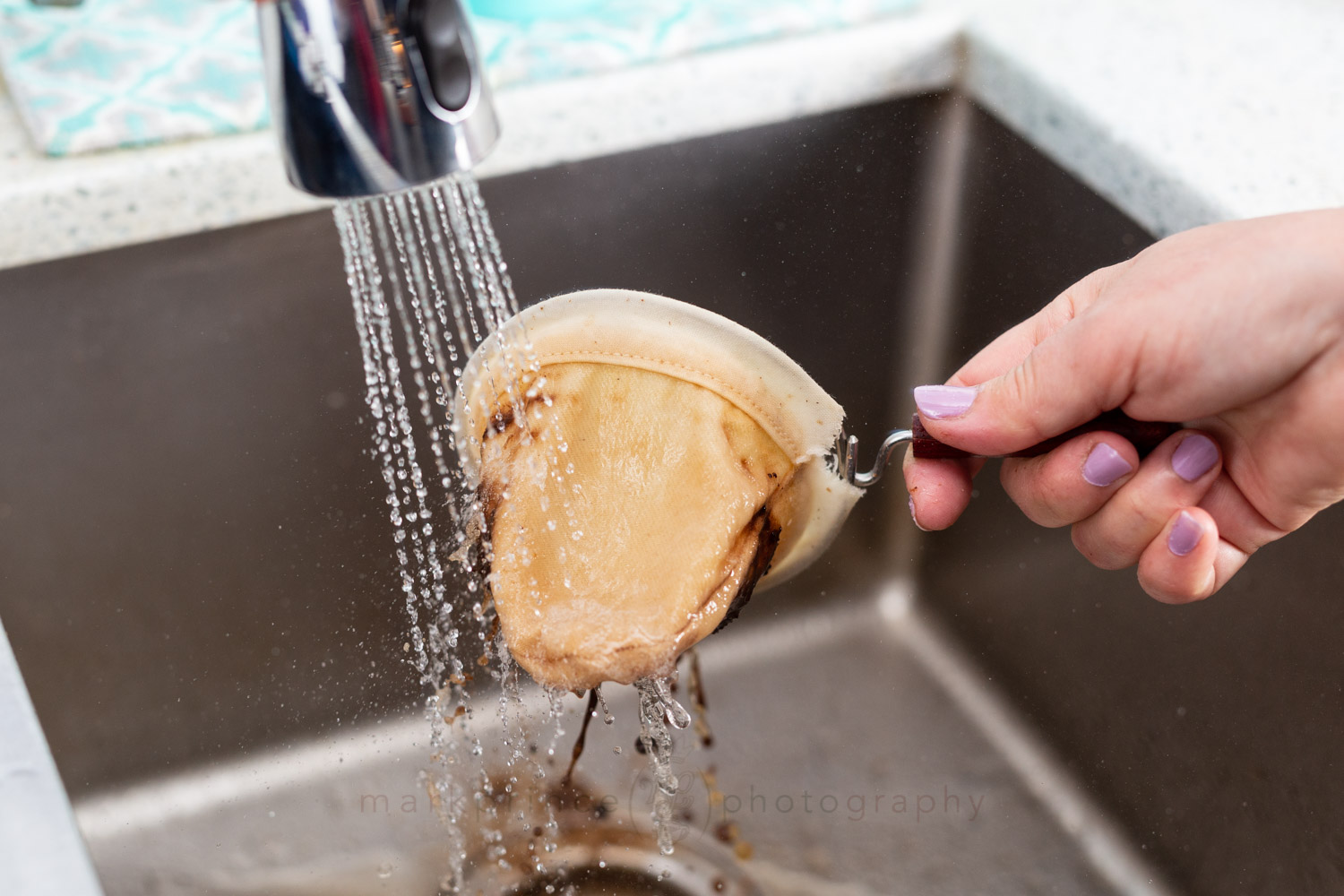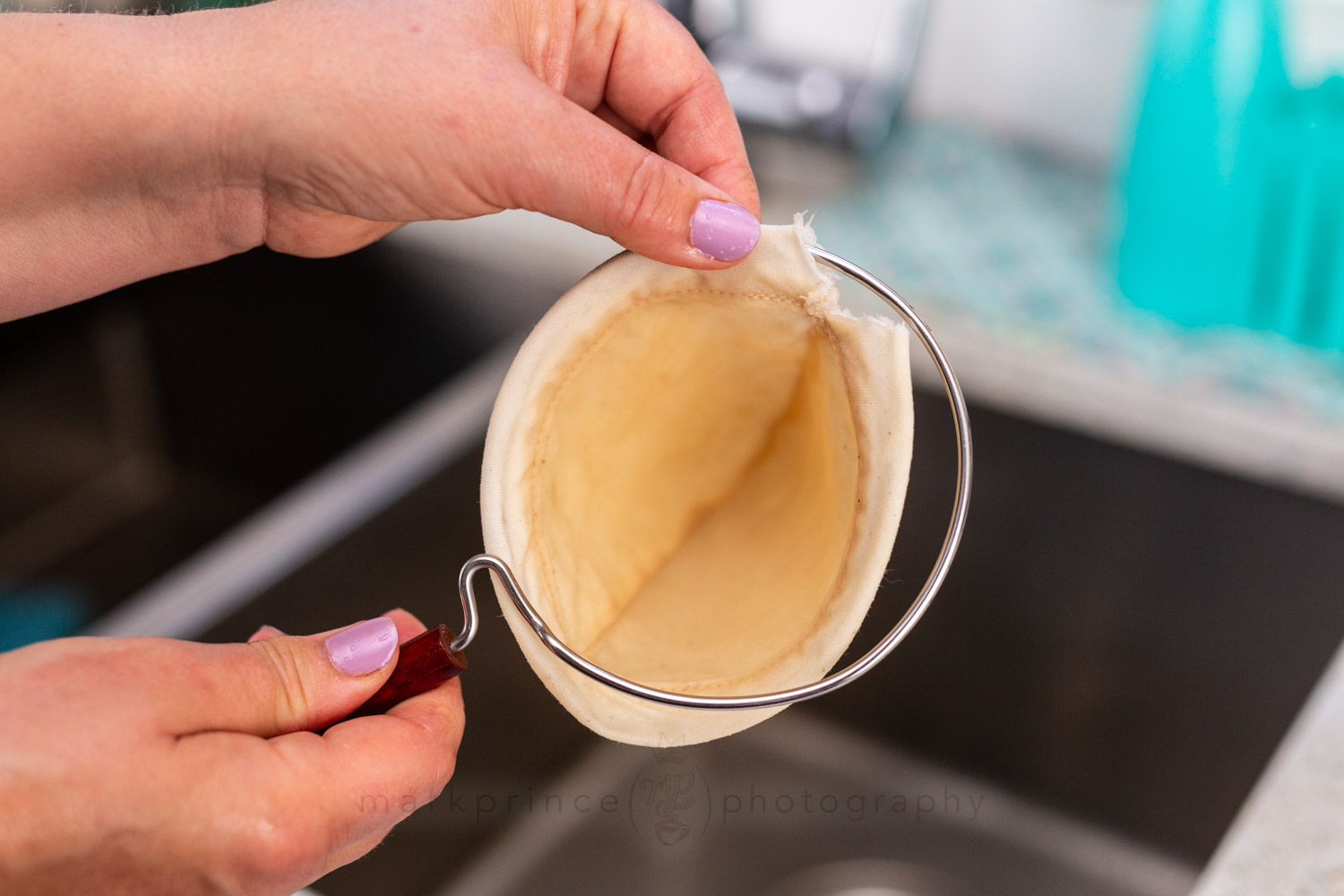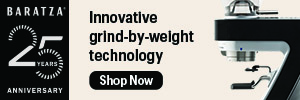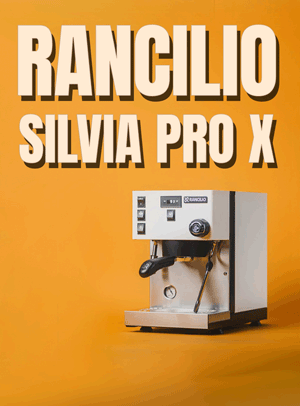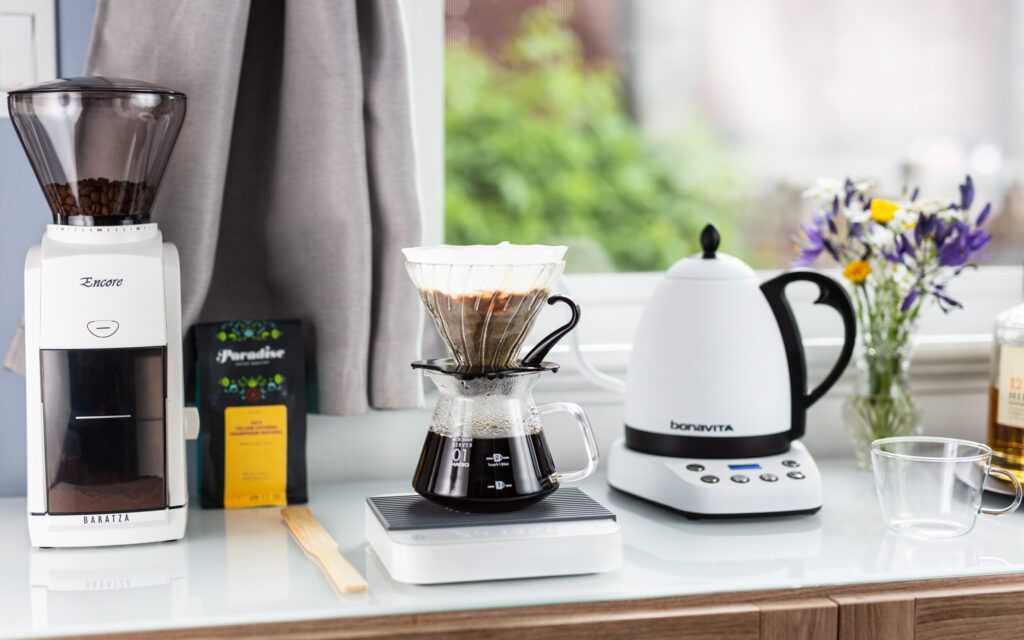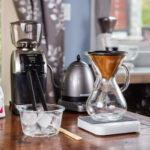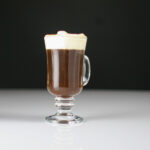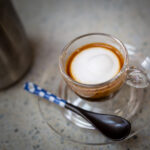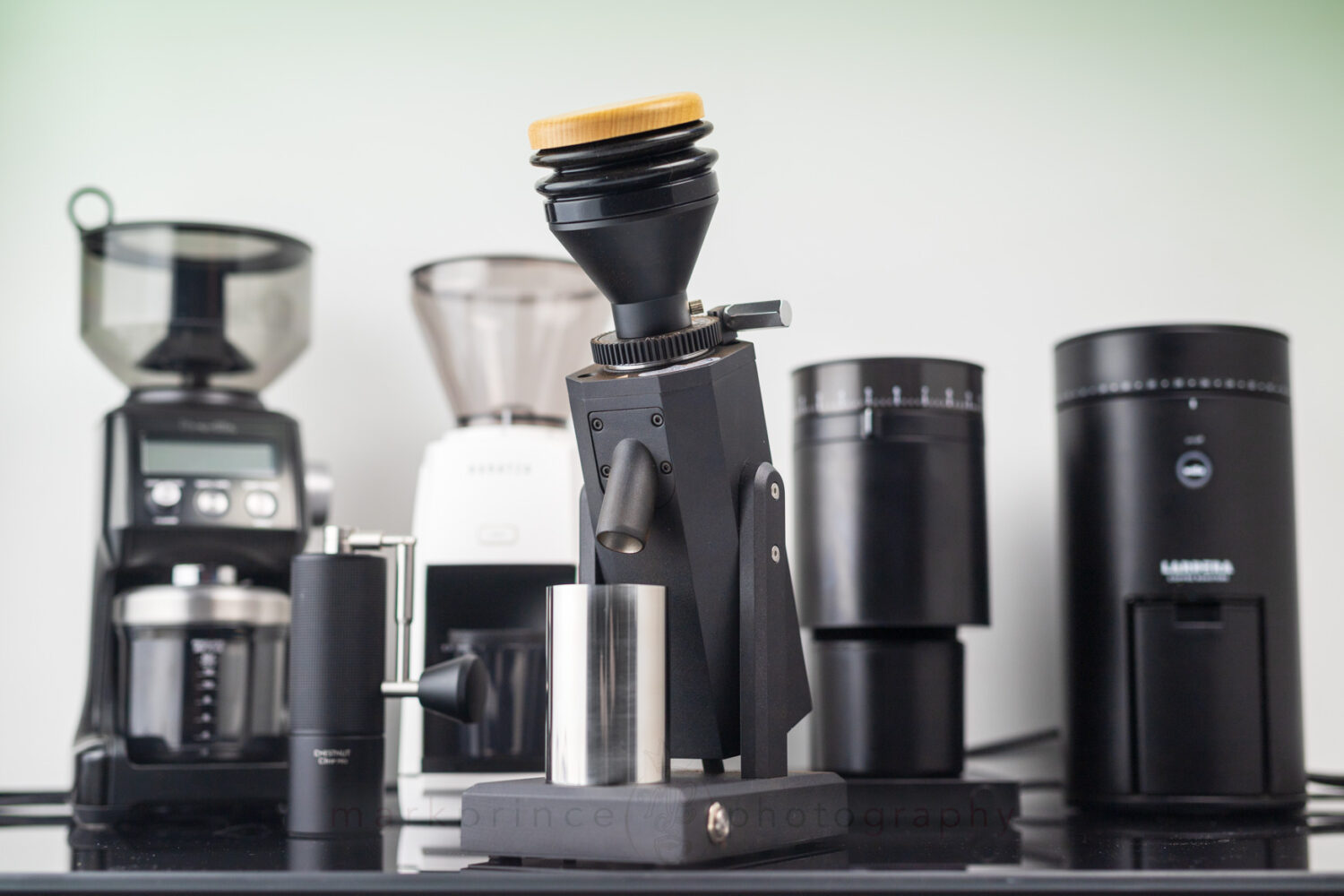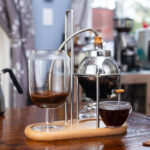How to Brew with a Cloth Pourover
If you want to eek out every flavour nuance and taste from your pour over coffee, while still producing a clean cup, cloth filters are the only way to go. Clean filters are absolutely paramount in this method, so we cover that quite a bit.
Here’s how to use one.
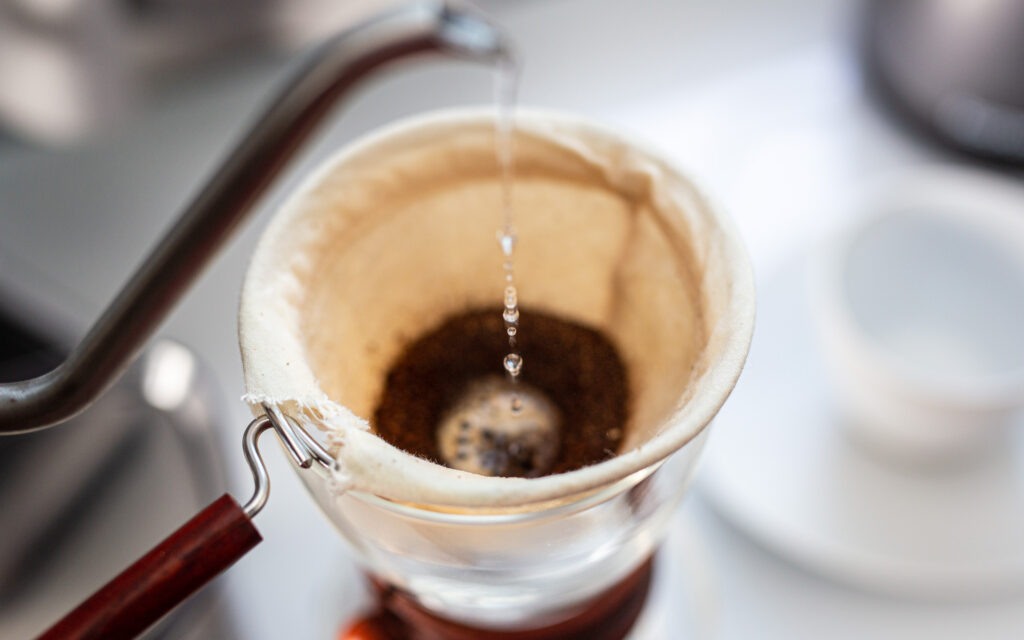
Time Needed: 6 minutes
Equipment Cost $ 75
Necessary Supplies
Necessary Tools
Cloth Pour Over Steps
Clean Cloth to Start
We’re showing you the minimum maintenance required to maintain your cloth brewer, and part of it is keeping your cleaned cloth filter in a glass or bowl of water, in the refrigerator between uses.
Rinsing Cloth
When it’s time to brew coffee, take your cloth filter out of the bowl of water, and give it a good wring dry.
Pat Cloth Dry
Following Japanese tradition for this brewing method, give your filter a good pat dry with a towel. You want the cloth filter to just barely be damp. Then attach the filter to it’s metal ring.
Rib on the Outside
These cloth filters usually have a softer material on one side, and a rougher material on the other side with the rib stitching. This part with the rib is the outside of the cloth filter. This is a common question.
Turn Kettle On
Fire up your kettle; if you have a temperature control kettle like the one featured here, set it for 96C (205F). Otherwise put your kettle on the stove and let it heat up to boil.
Grind the Coffee
Grind the coffee while the kettle is heating up. For cloth pour over, you want a grind that is an average drip grind; the particle sizes are around 750 microns average. On the Sette 270, we have it set for 17.
Measure the Coffee
Measure out your coffee. We recommend a ratio of 7g per 100ml brewed, which is just slightly higher than the often quoted 1:17 ratio of coffee to water. The good news here is, if you don’t have a scale, 7g of coffee is a slightly rounded tablespoon of coffee. We’re brewing 300ml, so we’re measuring out 21g. If you are using a single dose grinder, pre measure out the bean weight.
Add Coffee to Filter
Add your coffee to the cloth filter, creating a nice even mounds in the middle of the filter.
Dimple it Up?
Optionally, you might want to create a small, gentle depression in the middle of the coffee bed with a spoon or stir stick.
Begin Bloom Pour
Once your kettle is ready, start your pour with a very gentle stream that adds about 5g of water a second, or slower. Your goal here is a 2:1 max ratio of water to coffee (so if you used 21g of coffee, pour about 40ml of water for the bloom). Some prefer a 1:1 ratio for the bloom pour. It’s your choice. If you are using a kettle just off the boil, let it rest for about 2 minutes before using, to have a starting water temperature of around 94-96C (200-205F).
Bloom Pause
Pause for 30 seconds and let the coffee fully bloom and saturate. It’s called a “bloom” because when you use fresh ground, freshly roasted coffee, a lot of stored CO2 will escape from the bed of coffee, foaming it up. This is a good sign.
Main Brewing Pour
Begin your brewing pour. The goal here is to pour slower than a rate of 5ml (5g) of water per second; ideally you’re really controlling the flow so it’s around 2 or 3g a second. You are controlling the infusion and pass through time.
Concentric, Slow Pour
Your main brewing pour should also be a slow circular one – starting in the middle, then spinning the pour clockwise until you circle the outer part of the bed of coffee, then slowly shrinking your concentric circle pour back to the middle again. Your main pour time should last 60 to 90 seconds.
Brewing Times
We’re aiming for a full brewing time of around 3 minutes, 30 seconds for a 300ml brew. If the volume was higher (say 600ml), we’d be going for about a minute longer. The final pouring of the water as you reach your brewing volume (we’re using a scale to see that 300mls is being brewed) is just as important as your first bloom pour; be gentle, make sure you’ve covered the entire bed of coffee, and ease up as your pouring ends.
Serve the Coffee
Next up, serve the coffee and enjoy it at your leisure, keeping in the back of your mind you will need to clean the filter quickly afterwards.
Cleaning the Cloth Filter
Part of ensuring awesome coffee from a cloth filter system means you need to clean things very soon after brewing. The longer the cloth filter sits, absorbing the spent coffee, the more difficult it will be to clean. First part is dumping the spent coffee into your compost. Easy peasy.
Rinsing the Filter
Next, give the cloth filter a very thorough rinse under hot water. Hit both sides of the filter, and it doesn’t hurt to gently run a plastic bristle cleaning brush over it too.
Remove Filter from Ring
Once completely clean to your eye, remove the filter from the ring filter holder. NB, this is optional – you could just use a larger bowl to store the cloth in, but it’s better to remove the ring and fold the cloth up into a smaller, sealed container for refrigerator storage.
What MakesCloth Filter So Good?
There’s basically three popular types of filtration materials for coffee these days: metal, cloth, and paper. Metal, used in espresso but also seen in permanent filters in auto drip coffee makers and things like the Kone filter for Chemex, allow all the chemical elements that make coffee taste great to pass through from the ground coffee to the cup, along with a bit of solid materials (often called coffee “sludge” and most prevalent in press pot coffee).
Paper filters stop almost all solid materials from passing through to the brewed coffee; they result in a very clean brewed cup. And cleanup is super easy with them too. But paper filters also act as an impermeable barrier to some of the most crucial elements that contribute to coffee tasting better: paper can block the transport of many of the non soluable elements in ground coffee, like lipids, oils, and fats. Some do get through, but paper blocks a lot of these elements. We could go into very great detail on this; how the transporter of these non-soluable flavour enhancers — carbon dioxide — is restricted by paper filtration; but we’ll save that for another article.
Cloth. It’s the best of paper and metal. Like paper, it delivers a very clean cup of coffee. But like metal, it allows all the flavour enhancing elements — fats, lipids, oils — to be transported to the cup.
That really is the bottom line. Cloth provides a clean cup, and a richer, more complete cup of coffee. But the cloth has to be exceptionally clean to provide not only these benefits, but to avoid imparting off flavours to the brewed cup. So how do you do that? We got you covered.
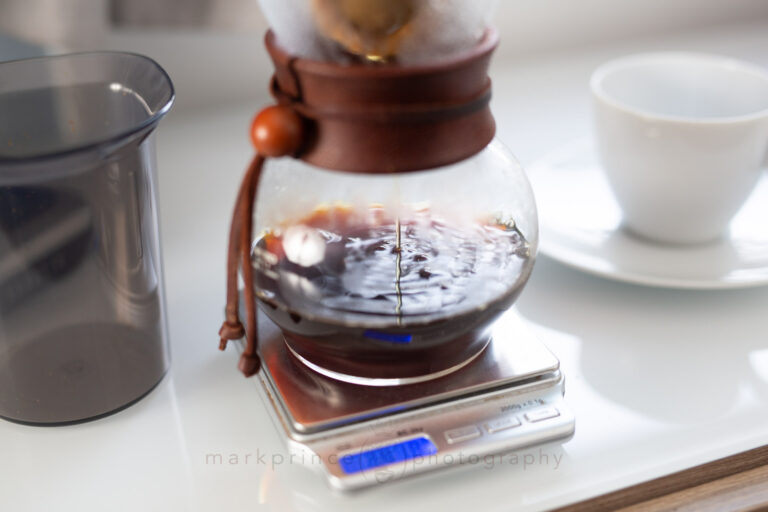
Brewing with a Cloth Filter
Cloth FiltersCleaning / Maintenance
No doubt, the most “painful” part of using a cloth pour over is cleaning the cloth filter. We think it’s worth it.
In our how to, we showed the traditional Japanese method for cleaning and storing your cloth filter between uses. The practice of a good rinse, followed by storage in a glass jar or bowl filled with water, placed in the fridge, not only dates back 60 years in Japan with cloth pour over brewers, but even longer: going back to the 1930s and the cloth filters used for siphon coffees in the USA and Canada.
This is the bare minimum level of cleaning you should be doing with a cloth filter system. It should also be fully washed with soap and rinsed at least once a week, to maintain a decent cup quality. Rinsing is extremely important though, as any soap residue will have a dramatic negative effect on brewing coffee.
These cloth filters are pretty durable, and definitely can be thrown in the clothes wash as well, though we recommend giving them a second thorough rinse after, and letting them air dry.
Over the years at CoffeeGeek, we’ve developed another way to clean these cloth filters. It requires the use of Oxyclean (make sure it’s the unscented, basic version). It results in a sparkling clean, odor free cloth after every use.
After you dump the spent coffee from your cloth filter and give it a good rinse to get rid of the coffee grounds, put the cloth filter in a heat safe bowl, add a teaspoon of oxyclean, and pour boiling water over it all. Put the bowl in the sink because things will foam up.
After about 2 minutes, run cold water through the bowl and cloth to cool things down. Continue rinsing the cloth clean of any Oxyclean residue, for maybe 20 seconds. The result is a nearly bleached (without the bleaching) clean cloth that is completely odor neutral once dried.
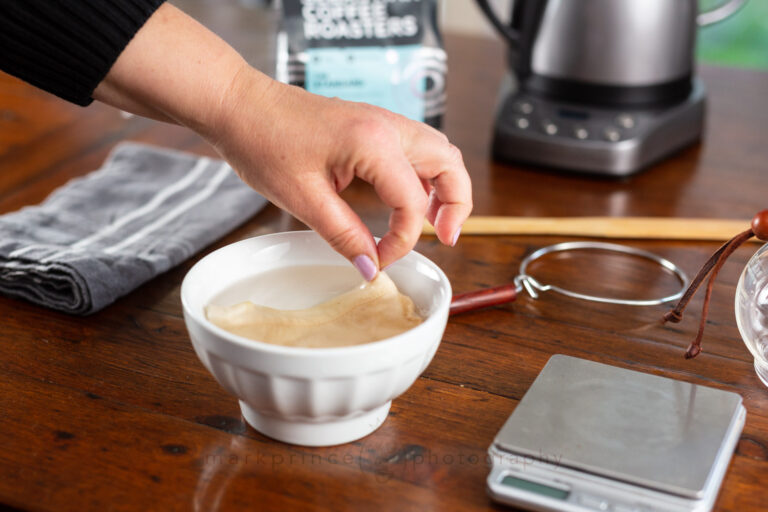
Keeping the Filter Clean

Support CoffeeGeek
If you enjoy and learn from this resource, please consider making a one time or recurring donation to help support our work and fund purchases for future reviews.
Notes onBrewing Times, Patterns
If you search far and wide on the Internet, you’ll find all sorts of uber-geekoid discussions on pour over flow rates, methods (pulse vs. straight flow), the patterns you should use, speed up / slow down pour methods, and multi-stage pours.
To be honest, most of these things are points of diminishing returns, and to be even more brutally honest, most of these things are chasing the rainbow of paper filter pour over systems, trying to gain back a bit of what paper keeps from you: aromatic lipids, oils and fats.
Stop chasing that unicorn. Use cloth filters instead and get all that extra juice in the produced cup. You might be startled at how much better the taste is, with no extra brewing effort.
That said, flow rate is important, and something you pretty much need a gooseneck (or swan neck!) kettle to achieve in making good pour over coffee. We’ve tried both the “dump and wait” brew method of pouring water really quickly into a filter with coffee, filling it to the max, and letting it filter out to the cup, and the “slow and steady” pour method described in this how to, and the cup quality difference is staggering.
A controlled flow rate, controlled even saturation of all the coffee, taking 60 to 90 seconds to gently administer water in a low and even flow does result in a much superior cup than the dump and wait method. But don’t take our word for it – try it yourself.
Regarding flow rate, we settled in on the 5g/5ml per second as a maximum speed flow rate. Doing that delivers you 300ml of brewing water in 60 seconds of pour time (not including the 25-50ml you poured for the bloom). Some regard this as a bit fast, but 5ml per second is an easily controllable rate for most folks, and dropping down to 2 or 3ml per second won’t actually make that much of an improvement (though if you can manage it, 3ml per second is really nice).
Bottom line here is this: don’t get too hung up on what crazy geeky discussions you might read on super refined pour over techniques. Have a good grinder, good water, good, fresh roasted coffee, and a clean brewer, and you’re already 90% of the way towards a fantastic cup of coffee.
ConcludingThoughts
Cloth pour over gives you the best of everything else the other two filter materials — paper and metal — provide you, while leaving behind their negatives. You get a clean cup, and you get a cup rich with all the best flavour enhancing elements ground coffee can deliver. The main downside to cloth pour over is the cleanup; with metal and paper, clean up is absolutely minimal. With cloth, cleanup can take longer than the brewing does. But it is worth the effort if the epitome of pour over taste is your goal.
This How To was originally part of CoffeeGeek’s Pour Over Coffee event, published in 2020. It was a two month series of articles and how tos, concluding with a Master Class on Pour Over Coffee. That Master Class is currently retired content, but we are working on updating it for 2024 and beyond.
If we can leave you with one really important thought from this how to, it’s this: you get as much out of this brewing method and equipment as you put into it. If you don’t keep your filter cloths super clean, your cup will suffer. If you do, the taste from this method puts all paper filter pour overs to shame.

Support CoffeeGeek
If you enjoy and learn from this resource, please consider making a one time or recurring donation to help support our work and fund purchases for future reviews.


















